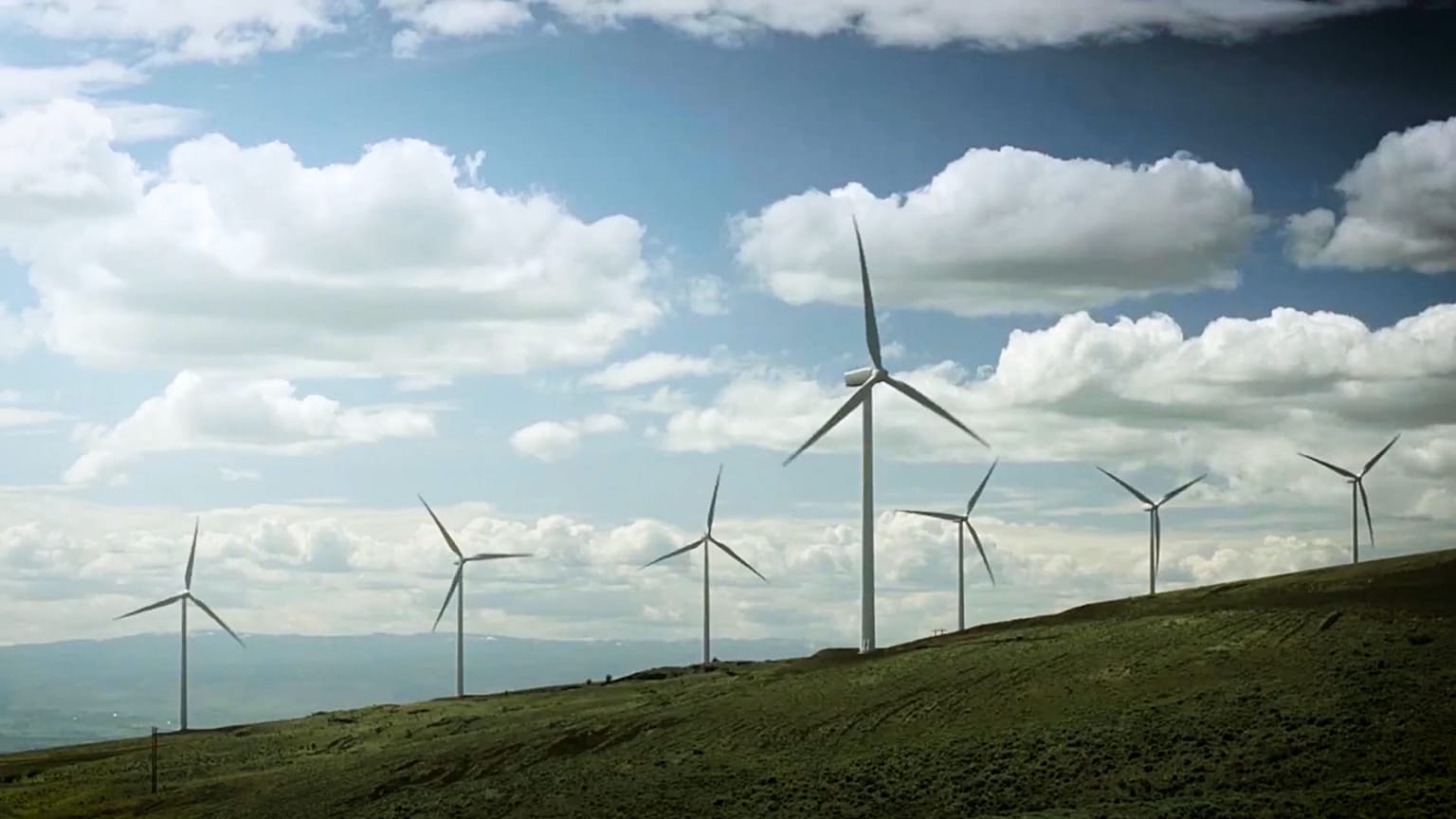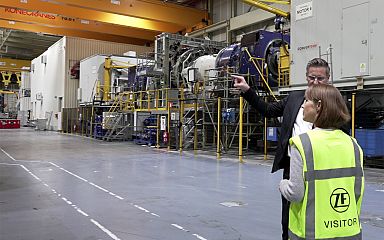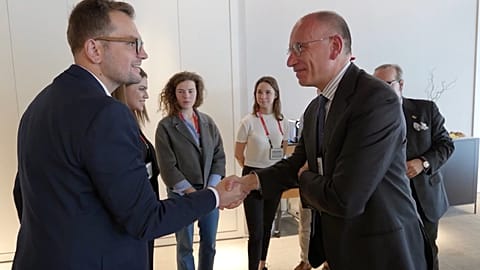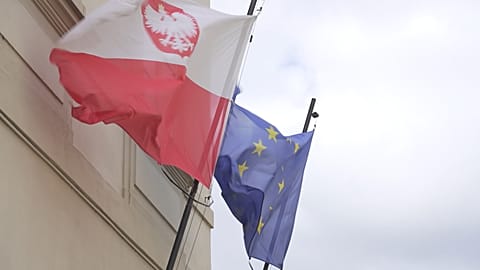European producers are racing against the clock to build enough wind farms to meet the EU's renewable energy targets by 2030. Euronews correspondent Andrea Bolitho speaks to the European manufacturers leading the charge for Business Planet.
The European Commission says the EU needs to expand its wind power capacity and build an additional 31 GW (gigawatts) of wind farms every year if it is to meet the EU's renewable energy target of 42.5 per cent by 2030.
This ambitious target will require a massive increase in wind farms. A record number of wind farms were built across the continent in 2022, a 47 per cent increase compared to 2021's figures. However, the EU has warned that Europe is still well below its annual targets.
ZF Wind Power, in northern Belgium, is a world leader in the manufacturing of gearboxes needed to create wind turbines. Turbines are getting bigger, therefore the gearboxes and the equipment needed to test them are also getting bigger.
Felix Henseler, the CEO of ZF Wind Power, explained to Euronews that it will not be possible to double production by next year but added that some factories are underused which means there is room for rapid growth, once the orders come in.
"There is already capacity available in the market which we could use to ramp up. It’s ambitious but in general not impossible to reach it but we need to start now" said Henseler.
ZF Wind Power makes powertrains for Vestas, the world’s leading wind turbine manufacturer.
Morten Dyrholm, Group Senior Vice President for Vestas in Denmark, highlighted the importance of simplifying Europe's bureaucratic processes for Brussels to achieve its wind goals.
"It can take in Europe, for example, between seven and ten years from, you know, [the time when] policymakers decide to go ahead with a wind power project until it actually starts producing electricity to the grid" Dyrholm said.
What is the EU's plan of action?
Shifting the focus to renewable energy sources is part of global efforts to reduce dependency on fossil fuels and limit global warming to 1.5 degrees Celsius. Offshore wind is expected to make a significant contribution to Europe's energy goals.
Brussels launched the Wind Power Package last year, and in December, the energy ministers of 26 member states promised to implement the changes needed in their respective countries to increase the number of wind farms and strengthen the competitiveness of Europe's wind value chain through the European Wind Charter. Hungary did not sign the agreement.
The Wind Power Package has the following aims:
- accelerating the build-out of the wind industry
- streamlining permitting rules
- improving auctions by indexing prices
- reducing the problems caused by rising inflation
- investing in ports and the grid
How much wind power is Europe producing?
One gigawatt of energy equals 1,000 megawatts or one billion watts. Many people associate watt measurements with lightbulbs, essentially one gigawatt of energy is enough to power some 750,000 homes or a medium-sized city.
Wind power currently accounts for 19 per cent of Europe's electricity consumption. The 17 GW built last year is enough to cover the entire electricity consumption of Portugal, that's household, commercial and industrial combined.
Europe wants its wind power capacity to reach 451 GW by 2030, up from 180 GW today, therefore, scaling up production is key.
Streamlining bureaucracy
Signatories of the European Wind Charter have vowed to get on board and for Giles Dickson, the CEO of WindEurope in Brussels, this is positive news: "Crucially it’s getting easier to get permits for new wind farms, it was very difficult, very legal and bureaucratic.
"The European Union has now brought in new rules to simplify the permitting. In Germany and Spain last year they awarded 70 per cent more permits for onshore wind than they had done in the previous year".
However, Dickson warned that Chinese manufacturers are also developing wind turbines for lower prices with generous financing terms: "They say ‘you do not need to pay us for three years’ ... we’re not allowed to offer that!"
Europe heavily depends on China for rare earth elements essential for the manufacturing of wind turbines. 98 per cent of Europe's rare earth element imports such as niobium, lithium and cobalt, come from China.
"The EU wants to reduce our dependency on China, diversify our supply... we're working with the EU to try and make that happen, source these materials from other countries, even expand the European supply chain for these materials", Dickson concluded.
For more on Andrea's report click on the video in the media player above.


















